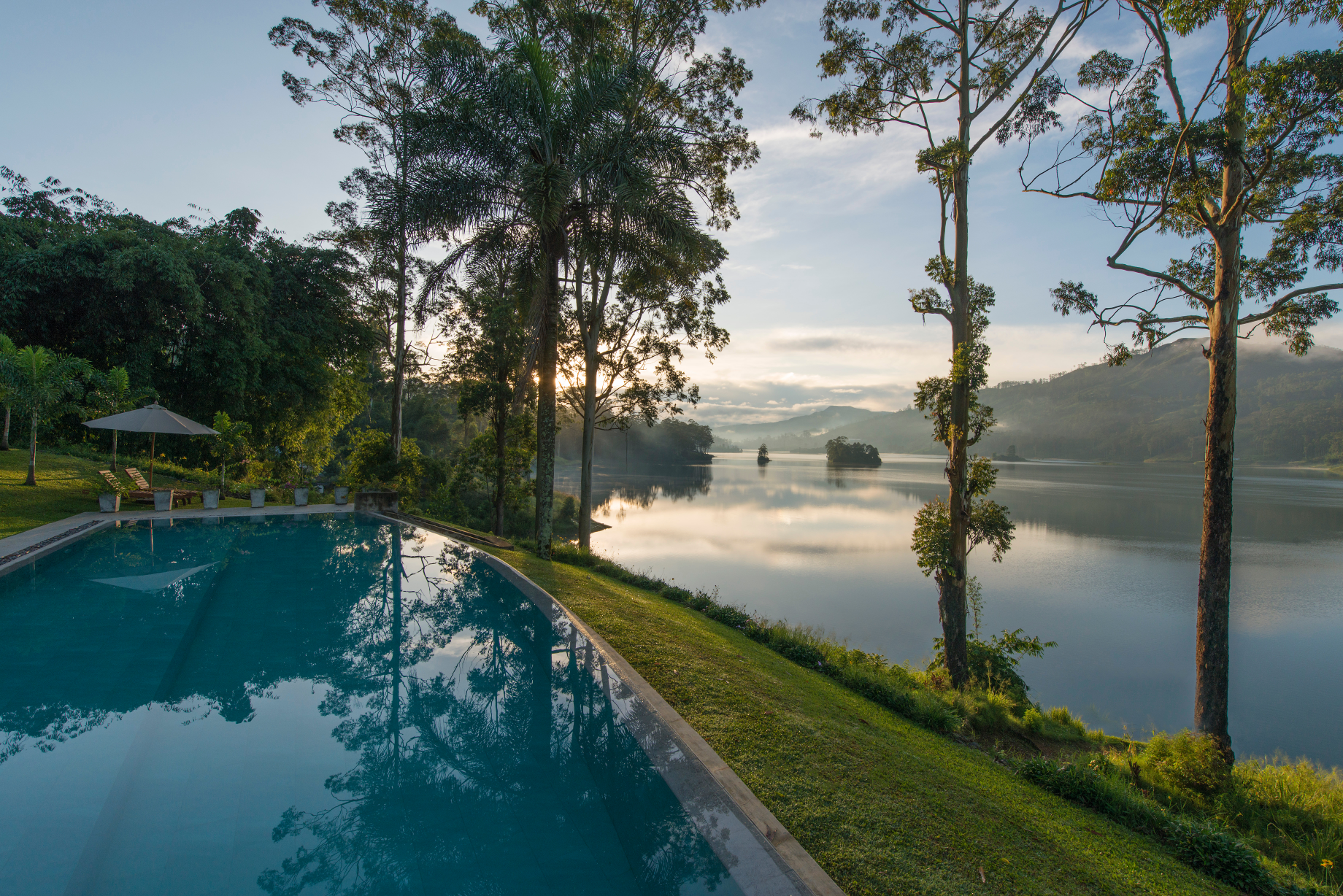Sri Lanka Food & Wine
Time for tea at Ceylon Tea Trails, Sri Lanka

Susan Borham ticks one off the bucket list on a journey along the tea trails of Sri Lanka.
Sri Lanka has occupied a place in my mind for many years, principally because I admired the fact that science fiction writer Arthur C. Clarke had maintained a global profile while leading a life there, I imagined, of exotic serenity. It became less ephemeral in 2008, when I met an expatriate executive of Air Lanka (SriLankan Airlines) in Sydney over lunch, who regaled his fellow diners with stories of the island’s potential, albeit then still troubled by civil war.
And so, when last September our family had the opportunity to visit, I was full of anticipation.
We took an unusual first tour, not doing the Colombo-Kandy loop, but instead heading straight to the cool High Country, home to the nation’s tea plantations. The Dilmah tea family has diversified, turning the former colonial homes of tea plantation managers into luxury villas for well-heeled adventures, creating the Ceylon Tea Trails.
We arrived at Summerville Bungalow at 3am after a six-hour drive from Colombo to be greeted by staff offering cold beers, cups of tea or any other refreshment we desired. The drive was, as promised by our welcome letter from tour operator Go Travel, “full of activity with never a dull moment”. Six hours of narrow, wet, winding roads with a perpetual stream of oncoming headlights ensured there was, literally, never a dull moment.
Because we arrived at night and transferred immediately by minibus, we missed the startling mountain vistas and only glimpsed the busy towns and villages. Less hardy travellers should stop a night in Colombo and/or explore the helicopter or rail transfer option.
That said, we were driven and guided by an extraordinary man, Charles Ferdinand, who had made his living in hotels, including in the Gulf States and, in semi-retirement continued to work to set his children up in their own homes. Charles provided important contemporary context that helped us understand the opportunities and challenges facing Sri Lanka as it emerges from the ravages of decades of civil war, mostly in the north, and the devastation wrought by the 2004 Boxing Day Tsunami along its southern coast.
Summerville is one of four luxury bungalows within a few hours’ drive of each other. It overlooks a serene, lake-like reservoir. On the other side you can see one of many tea factories dotted around the Tea Trails landscape. The tea plantations run much as they did a century ago, with mainly women working the fields, plucking kilograms of leaves by hand each day.
The tea is then sorted and processed in the tea factories. The factory we visited emphasised its ethical working conditions, but this is, of course, relative. There is no doubt this is an extremely demanding and laborious way of life, which underscores for me the comparative privilege and comfort we enjoy in the developed world – and the work of others that goes into what we think of as a simple pleasure, such as a cup of tea.
At altitude, the weather is temperate and the vegetation lush. We snapped away taking pictures as our son kicked a soccer ball on the lawns of the sister Norwood Bungalow against a backdrop of massive palms and a curtain of giant bamboo in one direction and slopes of terraced tea plants in the other.
When travelling, I opt as often as possible for local cuisine, so I was pleased to find it on offer alongside Western and children’s fare at every meal. As in many countries, there are two versions of local fare – both spring from the same base, but the nouvelle version usually has more to offer as it has outside influences. Fortunately, I love spices and curry, as it is an ingredient of most dishes. For example, the spicy Sri Lankan breakfast omelette comes with lentil (daal) curry and coconut salsa plus rice.
‘Hoppers’ are a range of dishes based on a fermented batter, usually made of rice flour and coconut milk, that is pan-fried and served with poached eggs inside them for breakfast interesting, but not my favourite. Other local meals at lunch or dinner are invariably anchored by fish, chicken, beef or mutton curries.
We also took a day trip into the local town of Hatton. It was bustling, muddy, but full of friendly faces, bright and colourful fruit stalls, cake shops, local furniture outlets and Sri Lankan versions of convenience stores, with toys for the kids. The railway station was a glimpse into the country’s British colonial legacy – and the local transport option. Western backpackers happily swung out of carriages as a train pulled in, but it was a humid and smelly experience, all told.
After a couple of days in Tea Country, we departed for the southern coast. Charles took the ‘short-cut’, but it was still another six-hour drive down extremely narrow, often gravel roads. The journey was breathtaking, in more ways than one. At one point, our road was blocked by a local festival parade, kids and adults in their colourful Sunday best, dancing with abandon to the beat of a walking band. We were lucky to chance upon this brief window into traditional Sri Lankan life in all its vibrant cultural glory.
Latest Articles
Don't miss the latest from Luxury Travel
